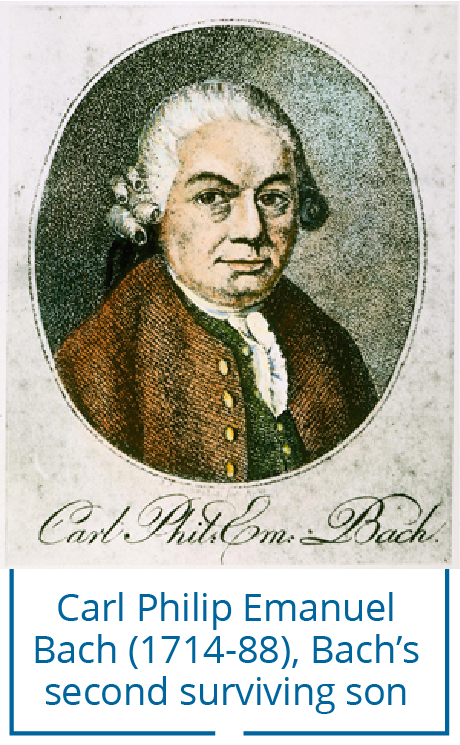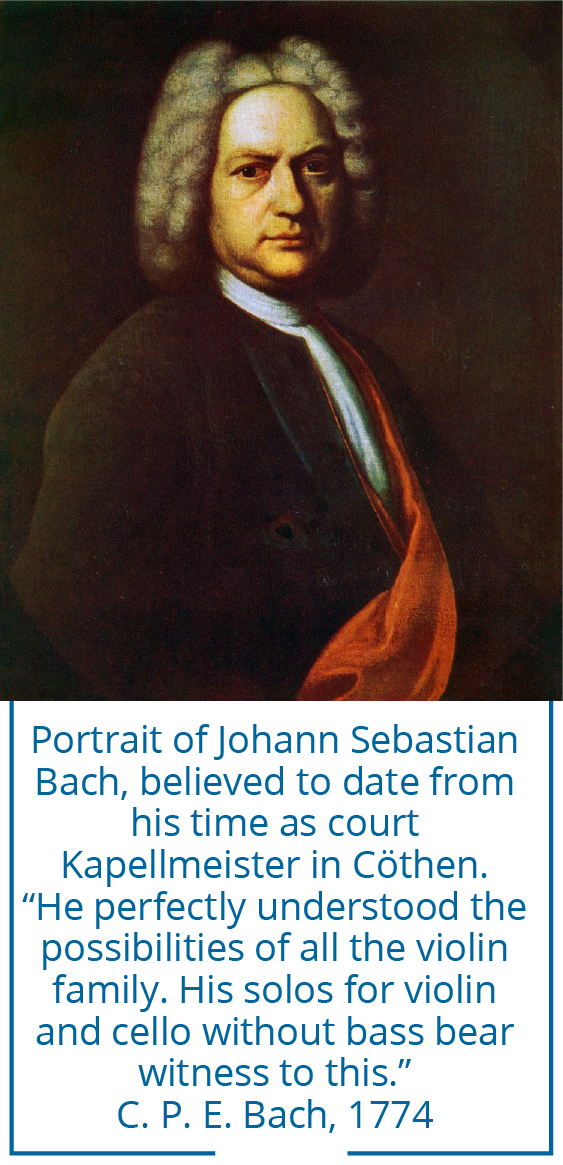SUITE NO. 5, IN C MINOR, FOR UNACCOMPANIED CELLO, BWV 1011
Johann Sebastian Bach
(b. Eisenach, Germany, March 21, 1685; d. Leipzig, July 28, 1750)
Composed c.1720; 26 minutes

We can’t be sure whether Bach designed the six Suites as anything beyond ’exercises’ (übungen), as there is no evidence to show why or exactly when they were composed. But, by grouping them into a set of six (along with the Sonatas and Partitas for solo violin, the Brandenburg Concertos, the Violin Sonatas, the French and English Suites), Bach was following what has been referred to as a ’guiding impulse’ throughout his entire working life – to bring a particular genre to completion and then to turn from it to other things. In these collections, Bach sets out to display the full musical potential of an instrumental genre and to uncover its full technical possibilities.
In the six Cello Suites, Bach’s overriding concern seems to have been one of symmetry. Each suite consists of a sequence of dance movements (Allemande, Courante, Sarabande and Gigue) which form the core of the traditional 18th-century suite. In each case, the dances are preceded by a Prélude which offers Bach the opportunity to evoke a different mood for the instrument and provide the maximum amount of contrast from one suite to another. He also adds several more ’modern’ dances to the suite, grouped into a contrasting pair. The Fifth Suite includes a pair of Gavottes. The suite is unique in that Bach asks for the top string to be tuned down a tone.
 There are no known precedents for Bach’s unaccompanied Cello Suites. As exercises in the minimal that imply much more than their single line at first appears to offer, they are unmatched in 18th-century music. They have remained the yardstick by which successive generations measure solo instrumental string music. For the performer, they remain one of the major challenges of the repertoire. For the audience, the six Suites invite participation and our active involvement as we uncover the implied polyphonic richness of their secrets. Johann Forkel put it well over two hundred years ago when he wrote that Bach “develops his melodies from the internal resources of the art itself, without regard for the dictates of fashion . . . his melody never grows old.”
There are no known precedents for Bach’s unaccompanied Cello Suites. As exercises in the minimal that imply much more than their single line at first appears to offer, they are unmatched in 18th-century music. They have remained the yardstick by which successive generations measure solo instrumental string music. For the performer, they remain one of the major challenges of the repertoire. For the audience, the six Suites invite participation and our active involvement as we uncover the implied polyphonic richness of their secrets. Johann Forkel put it well over two hundred years ago when he wrote that Bach “develops his melodies from the internal resources of the art itself, without regard for the dictates of fashion . . . his melody never grows old.”